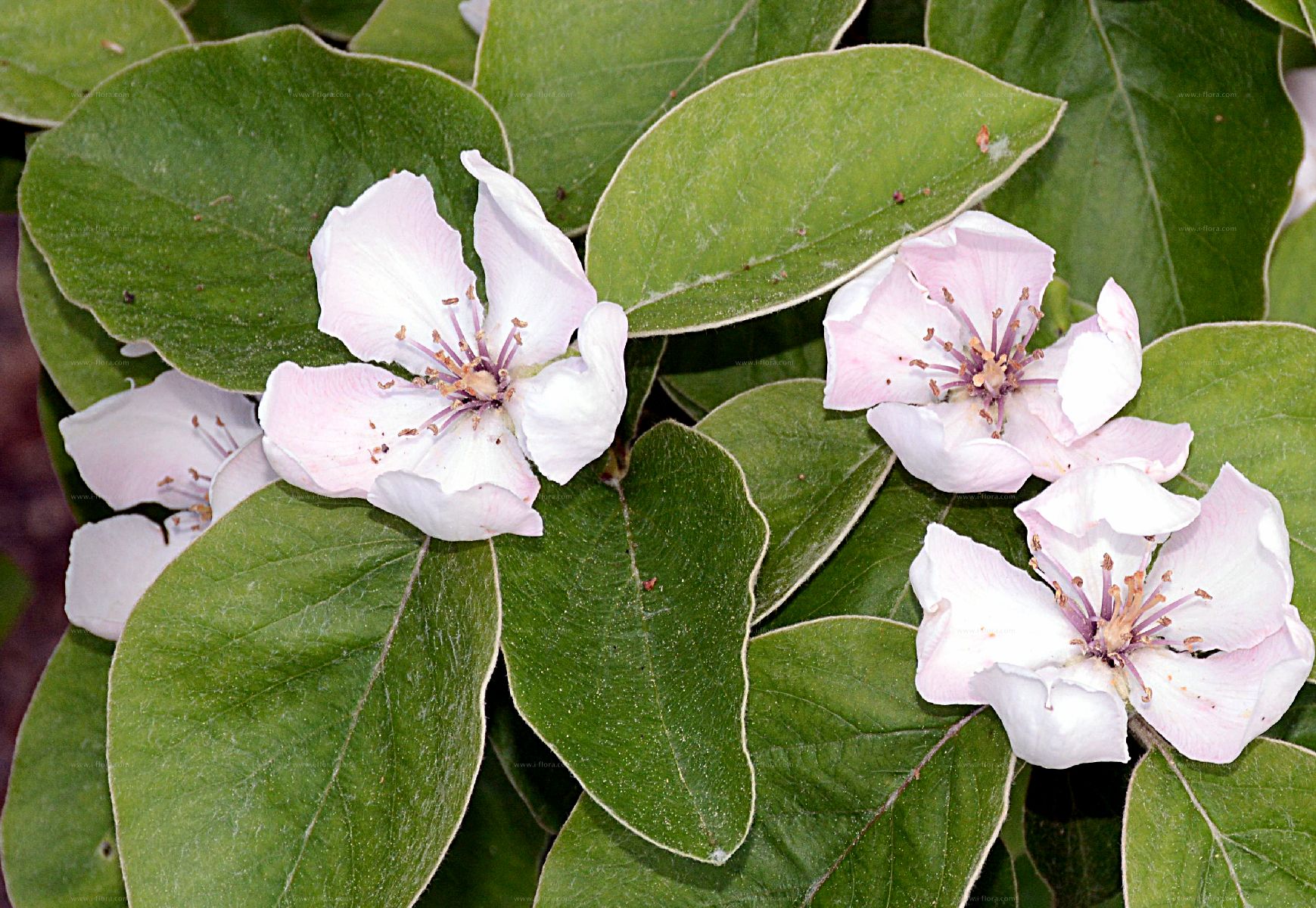
Suche nach Arten Echte Quitte (Cydonia oblonga Mill.)
leaf blades toothed and flowers 25-35 mm in diameter (vs. C. oblonga, with leaf blades entire and flowers 40-50 mm in diameter). Exochorda racemosa: flowers borne in a raceme, fruit a capsule, and leaf blades 15-60 mm long (vs. C. oblonga, with flowers occurring singly, fruit a pome, and leaf blades 50-100 mm long).

Cydonia oblonga (quince) Go Botany
Cydonia Type: Broadleaf Native to (or naturalized in) Oregon: No Deciduous tree/shrub, rounded, 15 x 15 ft (4.5 x 4.5 m). Leaves alternate, simple, elliptic to broadly ovate, 5-10 cm, tip acute, base rounded or subcordate, margin entire, dark green above, gray-downy below, may have rich yellow color in fall.

Cydonia oblonga em flor imagem de stock. Imagem de botânica 180092869
Introduction. Quince, also known as Cydonia oblonga L. is a member of the Rosaceae family and is commonly used for its medicinal, horticultural, and nutraceutical applications [Citation 1]].In Asia, Europe, the Middle East, and South Africa, the plant is extensively cultivated as a medicine and food plant.
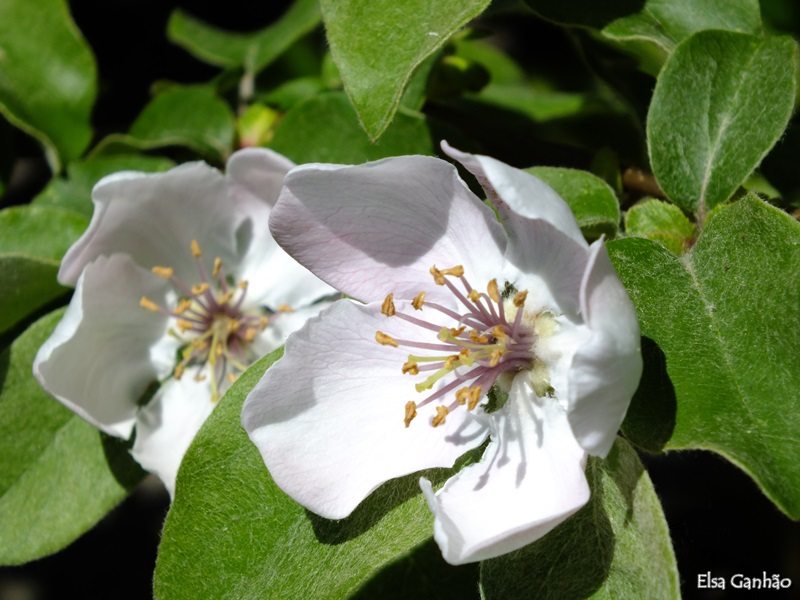
Cydonia oblonga / Rosaceae / Arbustos e Lianas / Lenhosas / Plantas / Espécies e habitats
Cydonia oblonga is cultivated in the United States, particularly California and New York, for its fruit and less often throughout temperate North America as an ornamental and a curiosity. It is often used as a dwarfing rootstock for pears.

Cydonia Oblonga Quince Flor Branca De Grande Dimensão E Grandes Pétalas Com Grandes Estames De
The soft-yellow, aromatic fruits of the Quince Cydonia oblonga are one of the delights of autumn, whether on the tree or brought indoors to perfume a room before being turned into something delicious. This is 'Meech's Prolific'. (The Dower House, Melbourne, Derbyshire, September 2022). Image John Grimshaw.
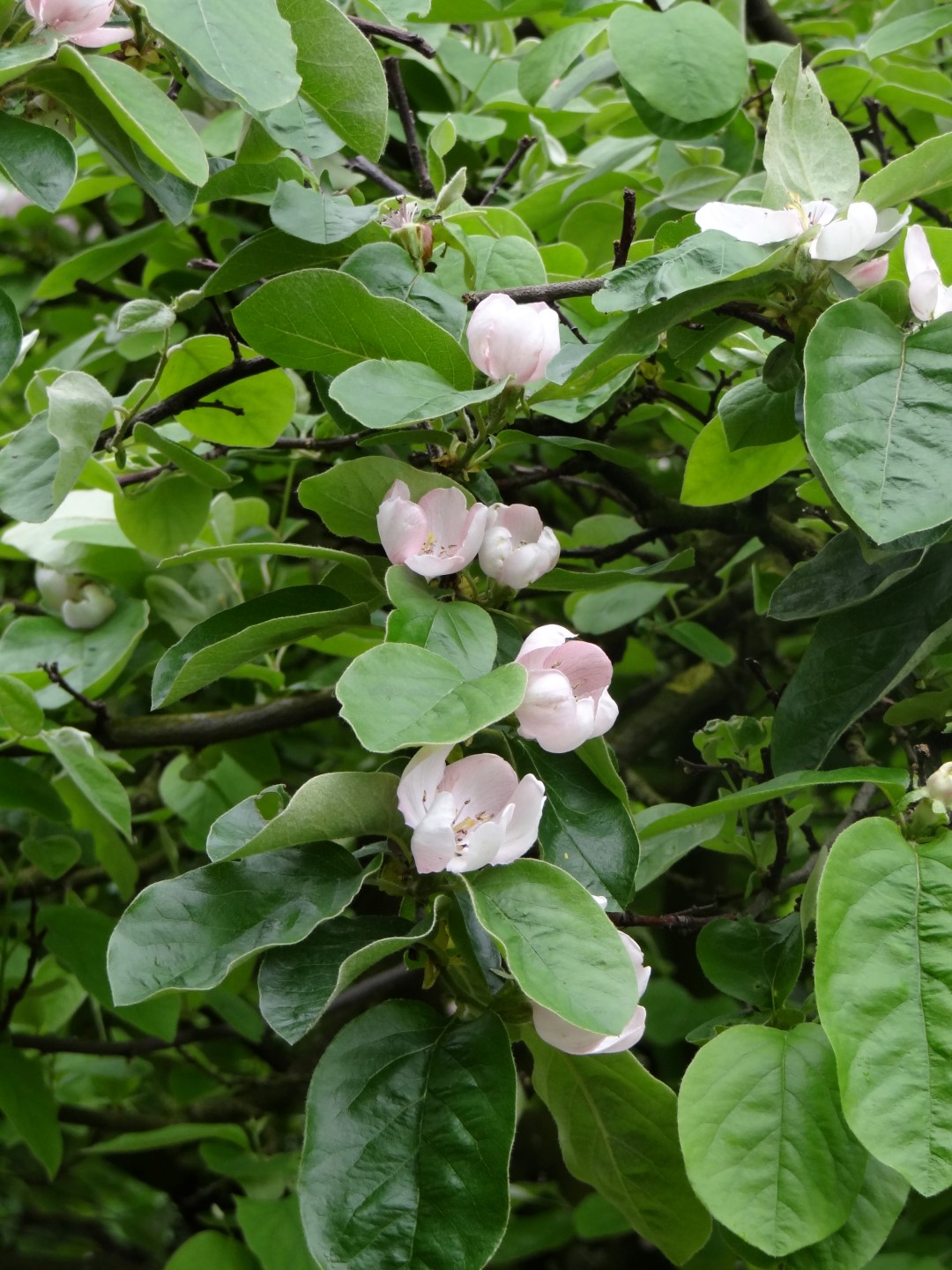
Cydonia oblonga Common quince Van den Berk Nurseries
Quince Tree vs. Japanese Quince . The quince tree (Cydonia oblonga) shouldn't be confused with the Japanese quince (Chaenomeles japonica).Japanese quince is an ornamental flowering shrub, not a tree, that produces pale pink or white blooms in early spring on a visually interesting multi-trunked tree that becomes gnarled as it ages.

Cydonia oblonga
Cydonia oblonga M. is a medicinal plant of family Rosaceae which is used to prevent or treat several ailments such as cancer, diabetes, hepatitis, ulcer, respiratory, and urinary infections, etc. Cydonia oblonga commonly known as Quince is rich in useful secondary metabolites such as phenolics, steroids, flavonoids, terpenoids, tannins, sugars,.
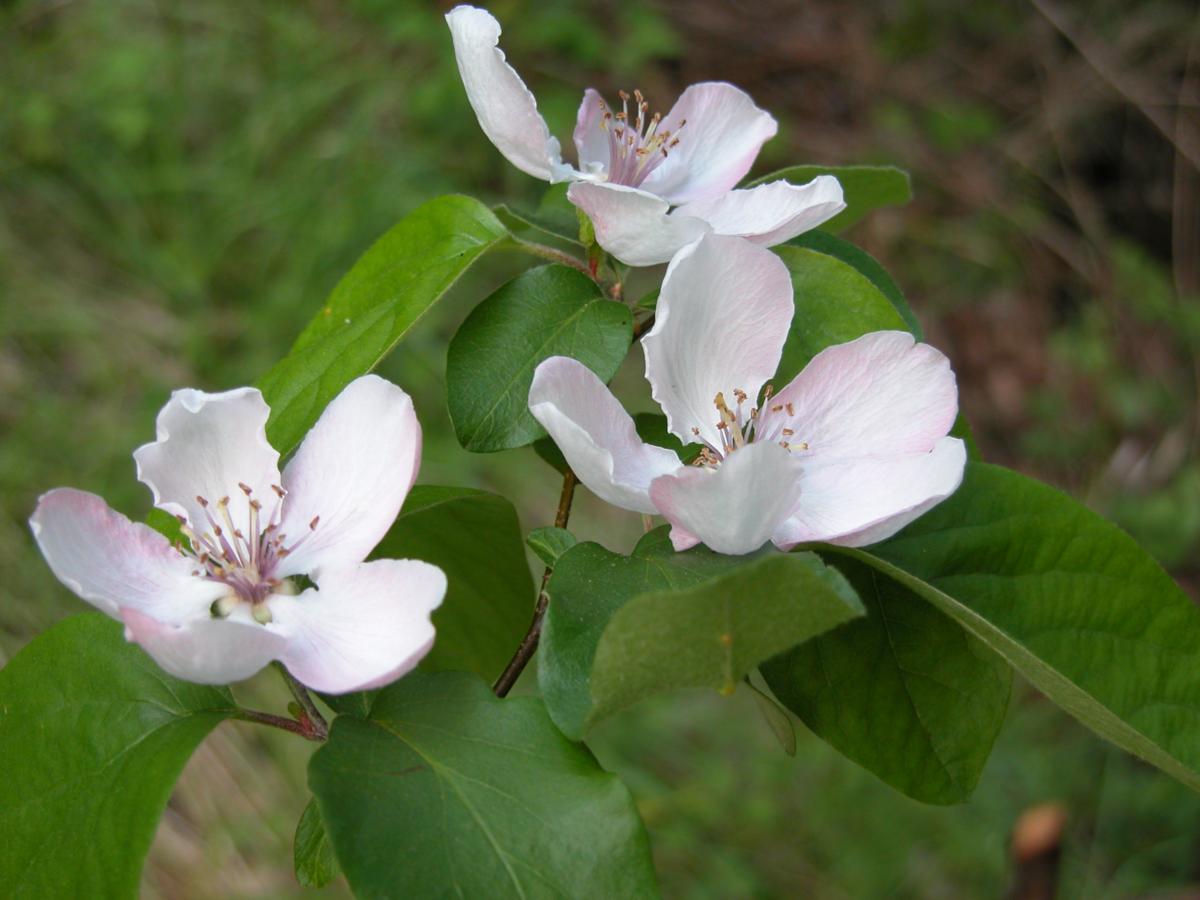
Cydonia oblonga NATURESCENE
Cydonia oblonga is a medicinal plant that is used to treat a number of health complications in traditional medication systems. The objective of this study was to evaluate the phytochemical composition, and antibacterial, antioxidant, and ant-diabetic potentials of methanolic extracts of Cydonia oblonga bark. The Cydonia oblonga bark extraction was fractionated through HPLC and seven purified.

Flor Del Membrillo O Del Oblonga Del Cydonia En Una Primavera Foto de archivo Imagen de
Height 200.0 ~ 800.0 cm. Diameter of flower 5.0 ~ 5.0 cm. Quince or Marmelo (scientific name: Cydonia oblonga) is a deciduous small tree or bush and fruit tree in the family Rosaceae native to Central Asia and the Caucasus. It has white pubescence on the back of its leaves. The flowers bloom in late spring-early summer after the leaves have.

Cydonia oblonga em flor imagem de stock. Imagem de botânica 180092869
Cydonia oblonga M. is a medicinal plant of family Rosaceae which is used to prevent or treat several ailments such as cancer, diabetes, hepatitis, ulcer, respiratory, and urinary infections, etc. Cydonia oblonga commonly known as Quince is rich in useful secondary metabolites such as phenolics, steroids, flavonoids, terpenoids, tannins, sugars,.

Flor Del Membrillo En La Primavera, Oblonga Del Cydonia Imagen de archivo Imagen de planta
Bloom Description: Pale pink to white Sun: Full sun to part shade Water: Medium Maintenance: Medium Suggested Use: Hedge, Flowering Tree Flower: Showy Attracts: Butterflies Fruit: Showy, Edible Garden locations Culture Easily grown in acidic, fertile, medium moisture, well-drained soils in full sun to part shade. Best flowering occurs in full sun.

Flor Del Membrillo O Del Oblonga Del Cydonia En Una Primavera Foto de archivo Imagen de
Discussion. Cydonia oblonga is cultivated in the United States, particularly California and New York, for its fruit and less often throughout temperate North America as an ornamental and a curiosity. It is often used as a dwarfing rootstock for pears. In the Mediterranean regions of Europe, South America, China, and elsewhere, it is cultivated for the golden yellow aromatic fruit that is rich.

Cydonia oblonga en flor imagen de archivo. Imagen de hoja 180092803
The quince (/ ˈ k w ɪ n s /; Cydonia oblonga) is the sole member of the genus Cydonia in the Malinae subtribe (which also contains apples and pears, among other fruits) of the Rosaceae family.It is a deciduous tree that bears hard, aromatic bright golden-yellow pome fruit, similar in appearance to a pear. Ripe quince fruits are hard, tart, and astringent. They are eaten raw or processed into.

Cydonia oblonga, picture 3 of 7
1. Cydonia oblonga Mill., Gard. Dict. ed. 8, Cydonia no. 1 (1768). Lectotipo (designado por Aldasoro y Aedo en Cafferty y Jarvis, 2002 ): Herb. Burser XXIII: 32 (UPS). Ilustr.: Wu et al., Fl. China Ill. 9: 81, t. 81, f. 5-7 ( 2004 ). N.v.: Membrillo, quince, B. Por F.R. Barrie. Pyrus cydonia L. Arbustos o árboles hasta c. 8 m; ramitas tomentosas.
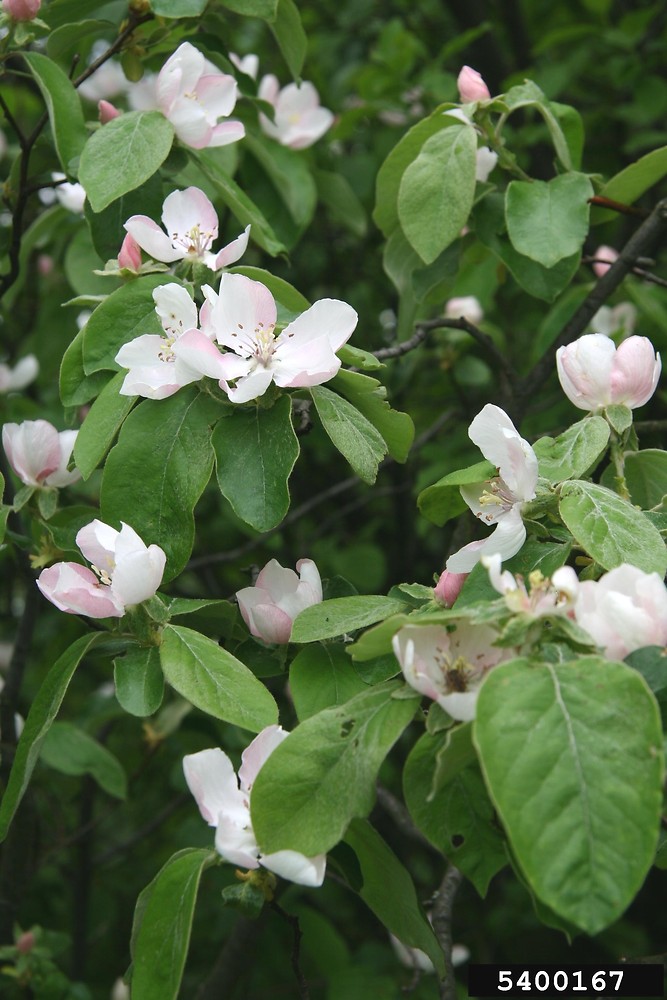
Cydonia oblonga (quince) Go Botany
Description: Shrub or small tree, sometimes suckering, unarmed, deciduous; twigs and young growth villous-pubescent; leaves stipulate, petiolate, ovate to ovate-elliptic, villous-pubescent below, glabrescent above, entire.

Flor Del Membrillo O Del Oblonga Del Cydonia En Una Primavera Foto de archivo Imagen de
Species 1. Cydonia is native from Iran to Turkestan; it is introduced and naturalized throughout much of temperate Asia and the Mediterranean region, where it has been cultivated for its edible fruit since ancient times.